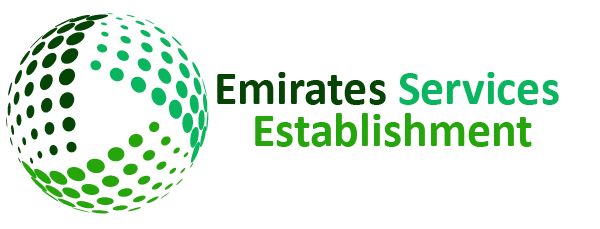
Fraud Prevention Tools: Essential Strategies for Businesses
In today’s digital landscape, businesses are increasingly vulnerable to fraudulent activities that can threaten their operations, reputation, and revenue. Implementing robust fraud prevention tools is essential to safeguard your enterprise. These tools can help you mitigate risks, protect sensitive data, and ensure compliance with regulatory standards. One effective solution is a platform like fraud prevention tools SoftBet, which offers advanced fraud detection capabilities.
Understanding Fraud and Its Impact
Fraud can take many forms including identity theft, credit card fraud, payment fraud, and more. The implications of fraud can be devastating for businesses, leading to significant financial loss, legal ramifications, and lasting damage to customer trust and brand reputation. A study by the Association of Certified Fraud Examiners found that businesses lose approximately 5% of their revenue to fraud each year, indicating the importance of implementing preventative measures.
The Importance of Fraud Prevention Tools
The rapidly evolving nature of technology has provided new opportunities for fraudsters, making it critical for businesses to invest in comprehensive fraud prevention tools. These tools not only help identify fraudulent activities but also streamline operations and enhance overall security. Here are several key reasons why businesses should prioritize fraud prevention:
- Risk Mitigation: By detecting and preventing fraud before it occurs, companies can significantly lower the risk of financial loss.
- Enhanced Customer Trust: Businesses that take proactive steps to protect their customers are more likely to cultivate stronger relationships and foster loyalty.
- Compliance with Regulations: Many industries are governed by strict regulations regarding data protection and fraud prevention. Compliance tools help avoid costly penalties.
- Operational Efficiency: Advanced fraud detection tools can automate processes, allowing teams to focus on core business activities rather than constantly monitoring for fraud.
Types of Fraud Prevention Tools
There is a wide range of fraud prevention tools available in the market today. Depending on your business needs, you may find one or a combination of the following solutions useful:
1. Identity Verification Tools
Identity verification tools ensure that users are who they claim to be. These can include biometric verification methods such as fingerprint and facial recognition, as well as document verification technologies that authenticate government-issued ID and other documents.
2. Transaction Monitoring Software
Transaction monitoring systems track customer transactions in real-time. They use algorithms to identify patterns and detect suspicious behavior indicative of fraud. If a transaction triggers a red flag, the system can alert the necessary personnel for further investigation.

3. Fraud Analytics Tools
Fraud analytics combine statistical techniques and data mining to analyze behavioral patterns. By leveraging machine learning and AI, these tools can continuously learn and adapt, providing higher accuracy in detecting anomalies and potential fraud.
4. Chargeback Management Solutions
Chargeback management tools help businesses manage and dispute fraudulent chargebacks effectively. They track the reasons behind chargebacks and provide insights into common fraud patterns to improve prevention measures.
5. Email and Phishing Protection
With phishing attacks on the rise, it’s crucial to implement tools that protect against email scams. These solutions often include spam filters, link scanners, and training programs for employees to recognize malicious emails.
Choosing the Right Fraud Prevention Tool
Selecting the appropriate fraud prevention tool requires careful consideration of your specific business needs and existing infrastructure. Here are some factors to take into account:
- Business Size: Larger organizations may require more comprehensive solutions that can handle higher transaction volumes, while smaller businesses might consider simpler tools or SaaS solutions.
- Industry Regulations: It’s essential to consider the regulatory requirements specific to your industry which might dictate the types of fraud prevention tools you need.
- Integration Capabilities: Ensure that any tool you choose can integrate seamlessly with your existing systems, such as payment gateways, CRM solutions, and ERP systems.
- User Experience: Consider the impact of the fraud prevention tool on customer experience. Choose solutions that minimize friction while maximizing security.
- Cost vs. Benefit: Weigh the costs of implementing and maintaining the tool against the potential savings from avoided fraud losses.
Future Trends in Fraud Prevention
The future of fraud prevention will likely be shaped by several trends as technology continues to evolve. Some key trends to watch include:
- Artificial Intelligence and Machine Learning: These technologies will continue to enhance fraud detection capabilities, enabling systems to improve their accuracy over time.
- Increased Emphasis on Data Privacy: With regulations like GDPR, businesses will need to ensure that their fraud prevention tools are compliant while still being effective.
- Collaboration Across Industries: Businesses may increasingly collaborate to share data and insights about emerging fraud trends, creating a more robust defense system against fraud.
- Real-time Analytics: The demand for real-time monitoring and analytics will grow, allowing businesses to respond immediately to fraudulent activities.
Conclusion
In the face of escalating fraud threats, investing in effective fraud prevention tools is not just advisable but necessary for businesses looking to protect their interests and maintain customer trust. By understanding the different types of tools available and carefully evaluating your needs, you can create a robust defense against fraud that not only safeguards your assets but also enhances your brand’s reputation. Remember, the cost of prevention is always less than the cost of dealing with the aftermath of fraud.
